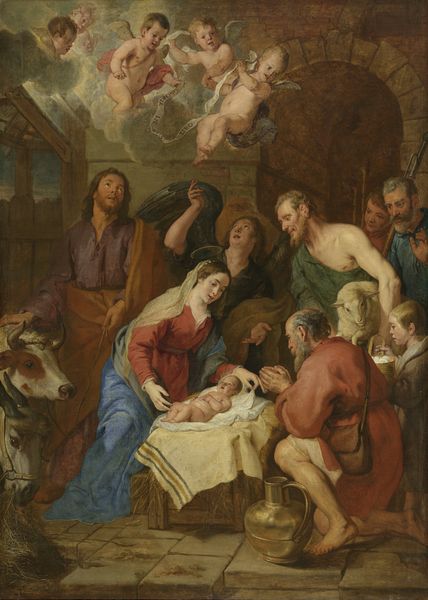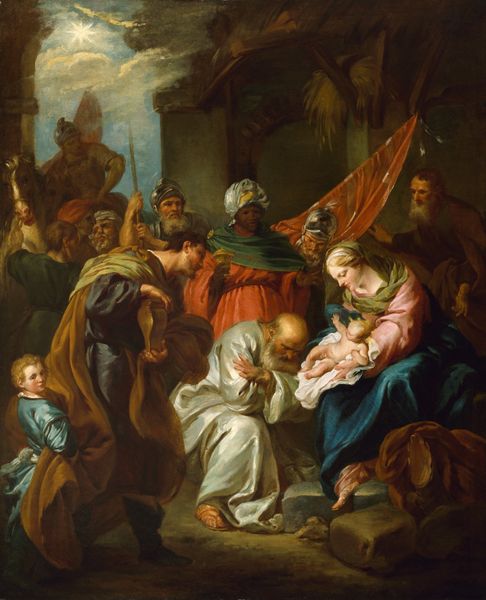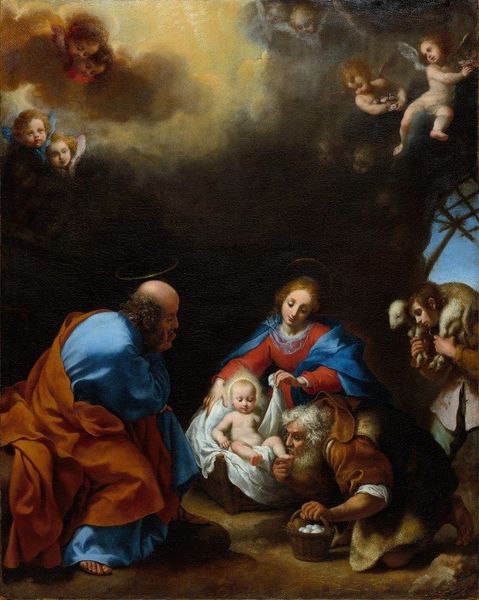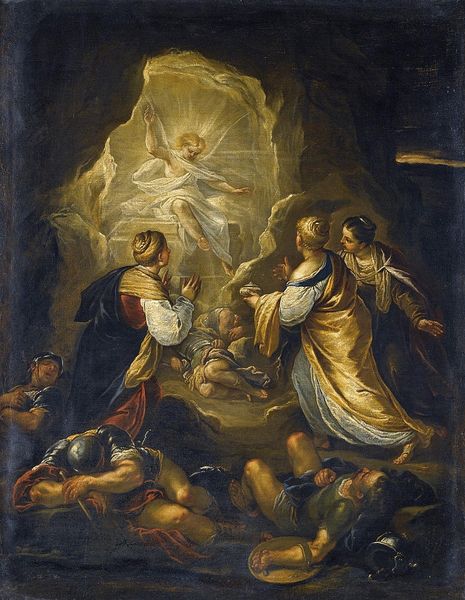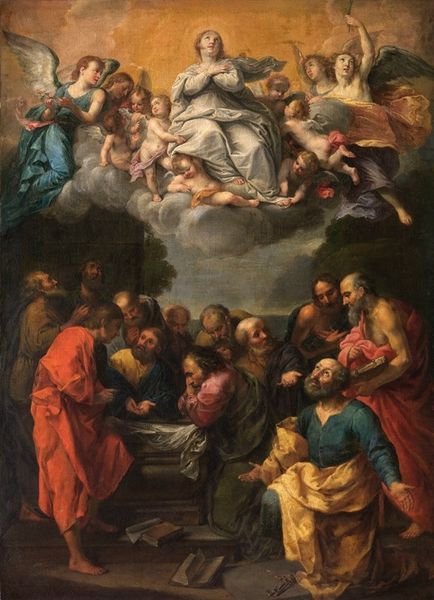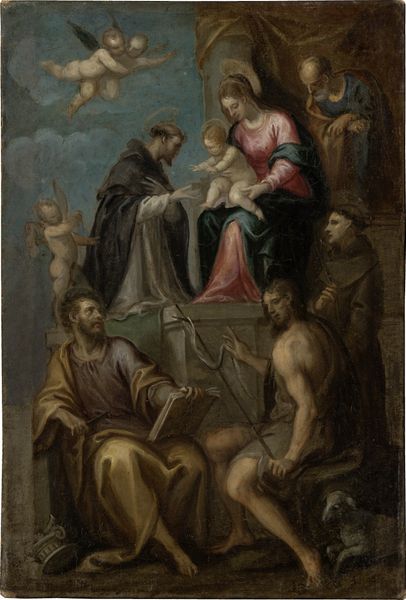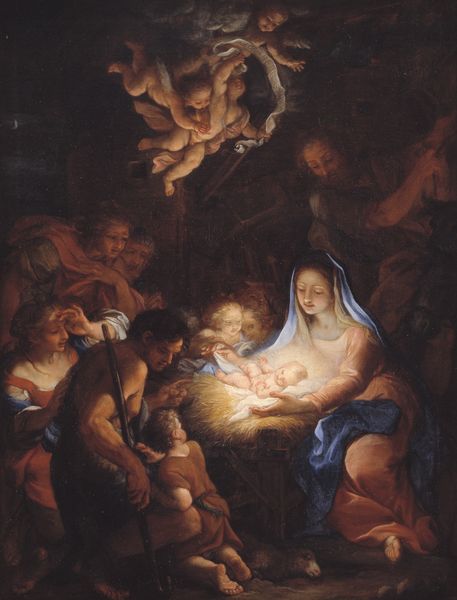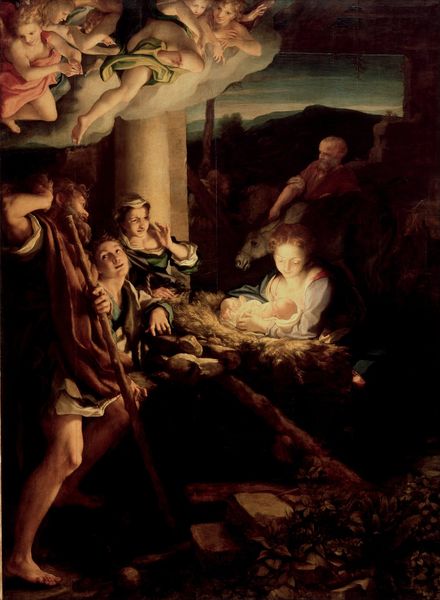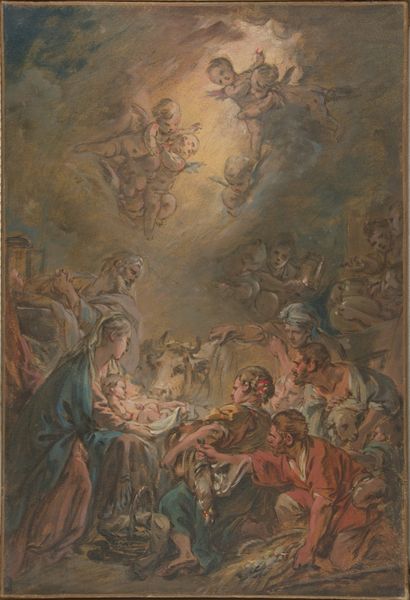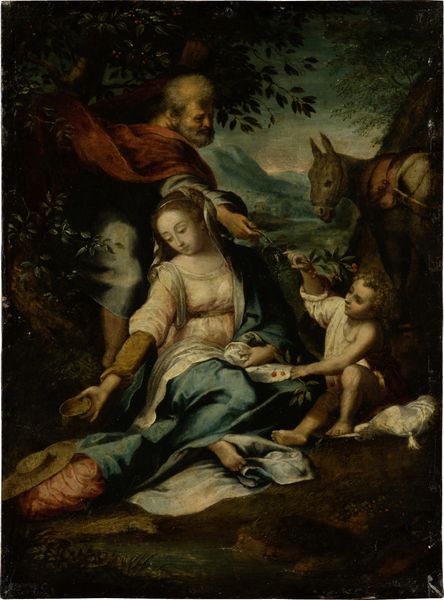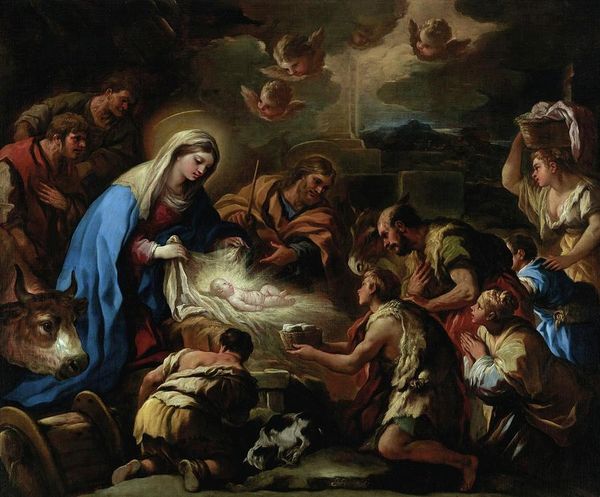
The Adoration of the Shepherds with Saint Catherine of Alexandria 1599
0:00
0:00
painting, oil-paint
#
portrait
#
narrative-art
#
baroque
#
painting
#
oil-paint
#
11_renaissance
#
oil painting
#
group-portraits
#
animal portrait
#
portrait drawing
#
history-painting
#
facial portrait
#
italian-renaissance
#
portrait art
#
virgin-mary
#
angel
Dimensions: 121 3/8 x 76 1/4 in. (308.3 x 193.7 cm)
Copyright: Public Domain
Curator: Cigoli, or Ludovico Cardi, completed "The Adoration of the Shepherds with Saint Catherine of Alexandria" around 1599. You can find it here at the Metropolitan Museum of Art. It’s an oil on canvas piece that beautifully captures a Baroque interpretation of the nativity scene. Editor: Wow, it has this lovely warmth to it, doesn't it? The lighting almost feels like a theatrical spotlight, focusing our eyes right on the baby Jesus. It feels both reverent and intimate. Curator: That's a great observation. Cigoli utilizes chiaroscuro very effectively, a common technique in Baroque art which plays with contrasts of light and dark. We need to also consider the Counter-Reformation's emphasis on clarity and emotional engagement, as the religious order supported devotional pieces of art as teaching material. The materials themselves also speak to wealth and patronage. Editor: Absolutely! I can almost feel the texture of that swaddling cloth. And it strikes me, thinking about context, how Saint Catherine is included... sort of like a bridge between divine miracle and everyday life. Do you think this inclusion helps make it feel relatable for contemporary viewers back then? Curator: Precisely. Saint Catherine was a popular figure and likely commissioned or selected by the patron for inclusion, thereby serving as a point of access for viewers, while further cementing Cigoli’s role within society. There is careful social negotiation at play within what at first sight seems purely devout. Editor: I’m really drawn to how human these divine figures appear. They're not stiff or idealized; they feel genuinely awestruck. It also has this rustic quality from the shepherd's cloth sacks and eggs as offering. What a feast for the senses. Curator: The art captures a specific nexus within history: the means and social functions involved in the construction and the distribution of knowledge about faith are inseparable, each impacting and reinforcing the other. Editor: That adds another layer for me. Seeing it that way almost enhances that personal connection, realizing it's a created object used to transmit cultural values and make one reflect. It's all so thought provoking.
Comments
No comments
Be the first to comment and join the conversation on the ultimate creative platform.

